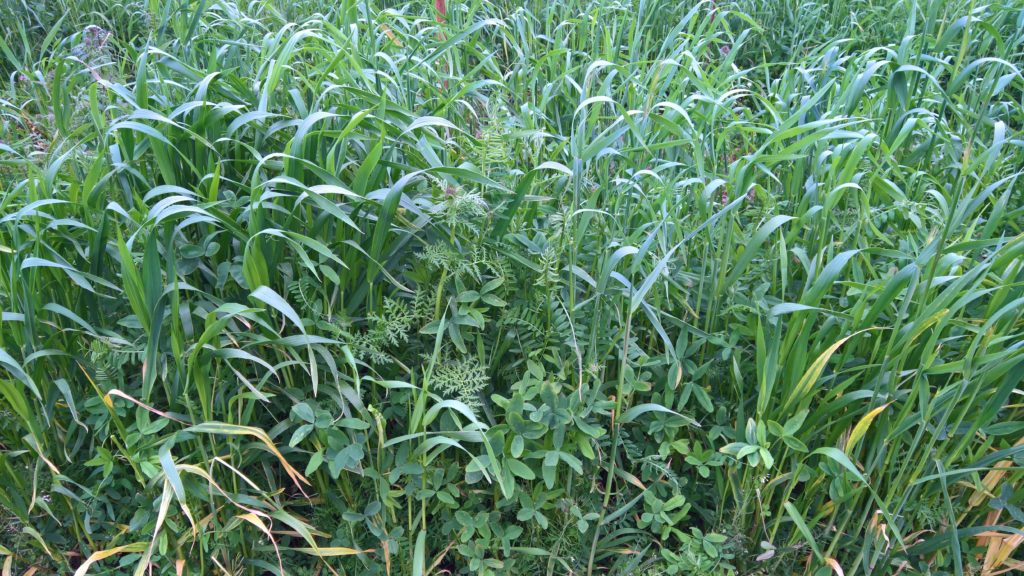Integrating cover crops can improve soil and water quality
4 ways Cover Crops Protect Natural Resources
As we look back through the last 12 months, it is safe to say 2019 was a trying time for most agricultural producers. From unprecedented flooding during critical planting periods leading to delays in fall harvest to the brutal winter that battered a majority of livestock operations, the spirit of the American farmer and rancher has been tested – of which many have persevered.
While we, the people of this industry, have been resilient to the punches delivered by Mother Nature, we must not underestimate the toll she can take on our most valuable natural resources: our soil and our water. These are the lifeline to the livelihoods of not only food producers but the people they feed and clothe.
Here are four ways cover crops can help protect our most essential natural resources:
1. Preventing soil erosion
According to Sustainable Agriculture Research & Education (SARE), the average sediment loss per acre in the US is 2.7 tons each year – all of which goes on to pollute waterways. While cover crops will never fully prevent wind and rain erosion, they can go a long way to slowing it down. By providing ground cover and deep root systems, cover crops help reduce land degradation from wind and water erosion. The living roots also enhance water management by protecting the soil surface from sealing and improving the drainage of wet soils.
When cover crops are integrated, SARE research indicates sediment losses from erosion are reduced by 20.8 tons per acre on conventional systems, 6.6 tons per acre on min-till systems, and 1.2 tons per acre on no-till systems.
2. Retaining nutrients
While cover crop roots and biomass work to lock soil into place, the reduction of erosion correlates to a reduction in nutrients like nitrogen and phosphorus reaching waterways in sediment. Additionally, cover crops also work more efficiently scavenging nutrients from the previous crop and releasing those nutrients for the subsequent crop when terminated. An analysis of 10 studies by SARE found cover crops to reduce nitrogen losses by an average of 48 percent. In one study, an 89 percent reduction was seen.
3. Integrated pest management
By selecting varieties specifically bred for traits to combat weeds and insects, cover crops can effectively be used to reduce the need for pesticides.
Thanks to advances in plant breeding, there are nematode-control radish varieties that are 90 percent effective at controlling sugar beet cysts and Columbia root-knot nematodes without the need for a seed treatment. White mustard is also effective at controlling nematodes; however, they are non-discriminate and will kill the good with the offending nematodes.
For effective weed control, selecting varieties with rapid growth during cool seasons will reduce weed establishment by providing a dense stand for soil shading. Certain cover crops, like cereal rye, have also been shown to have an allelopathic effect on weeds.
4. Improved soil fertility
One of the most important, but sometimes forgotten components of a profitable system, lies below the ground’s surface.
When increasing plant diversity, different root structures will increase access to untapped nutrients in the soil by reaching new depths. Not only can roots work to bust up compaction, but they also improve water filtration and the cycle of air and nutrients. This all works together to create a healthy habitat for beneficial microbes, in addition to creating channels for the next crop’s roots to reach their full potential.
On top of this, certain cover crop varieties can produce notable amounts of organic matter. In a trial conducted at the Ewing Demonstration Center (EDC) in Illinois, FIXatioN Balansa clover had a green biomass yield of 96,154 pounds per acre. All these components work together to improve the fertility of the soil, protecting its production potential for generations to come.
As you start making your New Year’s soil health resolutions for how cover crops can be incorporated into your row crop or forage program, remember that varieties matter. Improved plant breeding has given producers access to high-performing plant genetics and the ability to select for consistency of performance to avoid yield and cover ratio variation.
From all of us at GO SEED, we wish you a Merry Christmas and a Happy New Year.
To download high-resolution images from this article, click HERE.
Editor’s note:
Cover Crop Corner is a new educational column from forage application company Grassland Oregon and is free for print or digital distribution by media outlets. To be added to the distribution list, please email info@goseed.com
Click HERE for a printable PDF version of this article. Posted in: Cover Crop Corner


